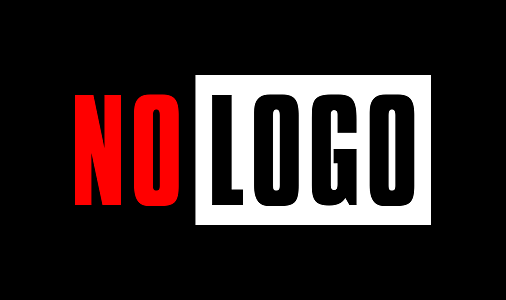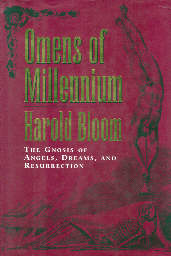By Naomi Klein
Review by Dan Geddes
No Logo is the book of the new anti-corporate movement. Although No Logo is not the original catalyst for the movement, Klein draws together the threads of 1990s anti-corporate activism into a compelling story. The story is the rise of the mega-brand in the 1990s. Business consultants agreed that corporations should focus on brand building and so companies such as Nike outsourced production to contractors in the developing world. Then they lavished money on advertising their brands rather than their products.
The power of multinationals is now so pervasive that this change of focus affects people worldwide. In the West, brand saturation has invaded many public spaces, including the city streets, schools and universities. Malls now serve the role of public forums, but unlike town squares, malls are privately owned, so any anti-corporate protesters can be removed from the point of purchase.
Klein groups her narrative into four parts—No Space, No Choice, No Jobs, No Logo. No Spaces describes the rise of the mega brand in the 1990s. Surprisingly, as recently as 1993 fears of the death of the brand gripped Wall Street in the wake of “Marlboro Friday.” Philip Morris had announced price cuts in their flagship Marlboro brand cigarettes. Brand makers and advertisers panicked that an era of value purchasing had descended, a time when consumers would buy non-brand name products in order to save money. But these fears were unfounded as Microsoft, Coca-Cola, Nike and The Gap led an unparalleled advertising expansion. Brands had long before dominated the public spaces of sports events and rock concerts, but now brands sponsored formerly publicly sponsored cultural events, especially in cash-strapped universities. Klein notes how Reagan-era corporate tax cuts and de-regulation starved the tax base, creating greater need for corporate sponsorship.
Brands positioned themselves as selling indispensable accessories to life in the new global village. Brand builders draw on countercultural and multicultural imagery to position their products as the latest in cool.
Ironically, even as the mega brands blared their message of global free markets, they lobbied governments for tax breaks, deregulation, and even sued state and local governments to overturn “selective purchasing agreements,” whereby local governments refuse to buy products made by companies operating in repressive foreign regimes.
Part II, No Choice, describes how branding practices actually restrict consumer choice. Starbuck’s brand bombing—their saturation of neighborhoods with coffeeshops—attempts to drive out local competition. Wal-mart has used scale to crush local competition, pricing goods less than what smaller shopkeepers have to pay wholesale.
To preempt charges of horizontal or vertical monopoly, business mavens now speak of “synergy,” where production and distribution are controlled by mega-firms. Disney, perhaps the inventor of synergy as long ago as the merchandizing blitz of Snow White, now controls ABC. Bertelsmann AG bought into barnesandnoble.com. Viacom bought Blockbuster Video and Paramount Pictures. Disney and Discovery have opened their own retail chains.
The media giants have unprecedented power to affect the expression of ideas. Wal-Mart can refuse to stock certain CDs, prompting recording artists to change their CD covers, or to produce alternate versions for sale at Wal-Mart. The synergy of corporate takeovers means that often the content producer and retailer are owned by the same company, so that the content producer has no incentive to stand up for free expression and deny profits to deny profits to their sister corporation.
The sheer size and purchasing power of these mega-corporations gives them the leverage to move production out of North America. Indeed, the garment industry, as described in Part III, No Jobs, is a scandal from top to bottom. For Klein, companies such as Nike have completely outsourced production in order to minimize costs and distance themselves from any responsibility to the people who actually make the products. This approach to the problem of production creates intense competition among developing economies to keep labor costs low and regulation loose so as to provide attractive zones for product assembly to take place.
The campaign against sweatshops in the garment industry has proved to be a rallying point for anti-corporate forces, much as in the 19th century. Now the industry is sustained by sweatshops first in South Korea and Singapore in the 1980s, jobs which relocated over time to ever cheaper labor markets, as in Indonesia and the Philippines, and now with China leading the pack toward lowest of the slave wages, as low as $0.12 cents per hour.
Klein visited a “free trade zone” in the Philippines and discovered mandatory unpaid overtime. There were also negligent fire safety measures (leading to a deadly fire, where many people died, some encountering bricked-in fire exits, others leaping to their deaths to escape the flames). Labor organizers are fired, or locked out of the sweatshops. Pregnancy is discouraged and pregnancy tests are given monthly in some sweatshops.
These abuses served as a rallying point for activists, who launched widely publicized campaigns against Nike and Kathie Lee Gifford. Klein admits that the success of the anti-sweatshop movement was carried off by the mainstream corporate media itself, which played up the scandalous “gotcha” quality linking world famous logos or celebrities with sweatshops.
Klein also credits the internet for good communication between the workers in developing countries and activists and consumers in North America and Europe. Workers paid $2 per day were taken to shops in America where the shoes they made were for sale for $120. Activists informed inner-city teenagers about the conditions of the workers who made their shoes. This communication warned American consumers about their link to slave labor of The Gap clothes, but consumers found it difficult to find brands that utilize harsh labor practices within the garment industry.
In the fourth part, No Logo, Klein describes different groups within the anti-corporate movement. One lesson is that the universal language of branding allows activists to focus their attack on a recognizable target. Brand-slamming has become a favorite tactic of the counterculture, whether in billboard defacement, parody (as in Ad Busters), or alternate music. Nike, McDonalds, and Shell have felt acute pressure from anti-corporate forces. Anti-corporate protesters have learned that corporations are more responsive to the power of boycott and protest than governments are to similar activist pressure.
Klein clearly endorses the forces of anti-globalization and anti-corporate power, but always finds it to be a measured response to corporate abuse. She describes both its strengths and weaknesses. No Logo suggests that a viable anti-corporate movement is finally in being, one that effectively changes corporate behavior. These anti-globalization groups are a more vocal opponent to corporations than the Democratic Party.
No Logo is an eloquent history of branding and its opponents, a conflict that is certainly deserving of a good historian. Klein brings the conflict to life. She revels in the victories of the movement, while also noting its limitations.
As of February 2003, the world economy remains in a funk. This is a good moment for forces that protect workers and consumers’ rights to assert themselves. No Logo shows the oppressed that they are not alone. Klein’s triumph is to chronicle the impact of the anti-globalization movement of the 1990s.
February 2003
Published April 2012










Be First to Comment